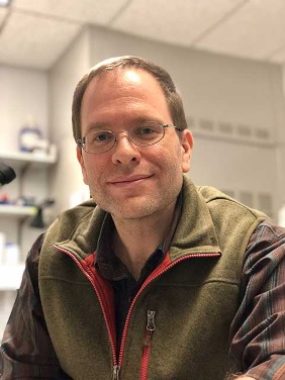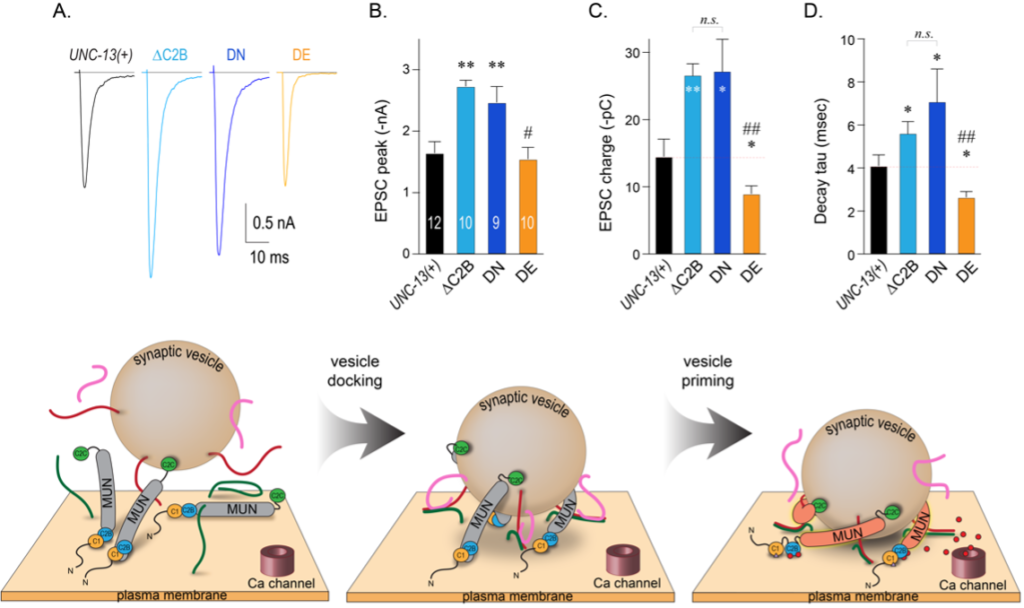
Stories
Jeremy Dittman: Combining Complex Perspectives

“I didn’t really know what a lab was or what research was until I got into college,” says Jeremy Dittman. As he approached the end of his freshman year at Stanford University, Dittman wasn’t sure of his career plans or even his summer plans until he had a lucky encounter with a friend in his dorm. “One of my dormmates was really into research, and he convinced me to go find a lab for the summer. His dad is a genetics professor at the University of California, San Diego—I guess that sort of ran in the family there. He was the one who inspired me to give research a try, and then I just loved it! I was hooked from that point on.”
Dittman was hired for the summer by Paul Sternweis, in the pharmacology department at the University of Texas Southwestern Medical Center, in Dallas. He didn’t know exactly what he’d be spending the summer doing. He was just happy to have found a lab that would agree to take him. As it turned out, Sternweis was working with G proteins—molecular switches that are key to signaling events in the cell.
“My assignment was to go purify G proteins from cow brains,” says Dittman. “This basically meant spending the summer in a cold room, during the very hot summer in Dallas—I spent every day wearing a ski parka. I was literally being frozen cold in a very hot town. I loved it despite the labor-intensive work. It was a lot of fun working with your hands, but then also having this intellectual component.”
Prior to entering college, his first experience with science and discovery came from a Scientific American article on neuronal synapses and the role of calcium by Rudolfo Llinás at New York University—this really captivated him. And, as Dittman gained more hands-on research experience and continued his undergraduate studies, he couldn’t help thinking back to that fascinating article. He still had unanswered questions about the synapses and how electricity works in neurons. Curious to delve deeper into these questions, Dittman focused on gaining experience in neuroscience research.
“I went back a year later to James Hudspeth’s lab. He’s now at Rockefeller University, but he used to be at UT Southwestern and worked on hair cells, which are the cells in our ears that do the hearing for us. They respond mechanically to the pressure vibrations when we’re hearing, and that also gives us our sense of gravity and acceleration. Just learning how these cells had mechanics and electronics and were like little micro-machines with this enormous complexity—I was fascinated by that and continued learning more about the biophysical physiology approach. I finally went to Rick Aldrich’s lab at Stanford, where as an undergrad I worked on ion channels. Pretty much from that point on I was focused on neuroscience, but it was that first summer, freezing in a cold room, that I figured out, OK, this is what labs do.”
After graduating from Stanford, Dittman pursued an M.D./Ph.D. from Harvard University, driven by his continued curiosity in the inner dynamics of the human brain, working with Wade Regehr in the neurobiology department before moving on to Josh Kaplan’s lab for a postdoc. In 2008, Dittman accepted a position as an assistant professor of biochemistry at Weill Cornell Medical College and started his own lab to understand synaptic function at the molecular level. At this time, Dittman was nominated to be a Rita Allen Foundation Scholar, and in 2009, along with seven other early-career scientists, he received funding from the Foundation for his innovative research ideas.
“Reflecting on his Rita Allen Scholar interview, he recalls it as ‘a chance for me to put out some wild ideas and give people more of a sense of the big-picture vision of what I was trying to do rather than just these tiny little sound bites that are very much the NIH-grant style of pitching something.’”
“I remember it very clearly,” Dittman says. “I was lucky enough to get picked for the interview, and then I got really stressed about it. I was new here in my home institution at Weill Cornell, so it was a chance to go ask for some help from other faculty—to prepare and to run my ideas by them. I remember preparing for the interview by talking with people in my department, including Chris Lima (a 2003 Rita Allen Foundation Scholar). I met him for coffee, and it was great. I remember that for some of these faculty members, that was the first time I interacted with them. Since then, they’ve become colleagues and collaborators.”
Reflecting on his Rita Allen Scholar interview, he recalls it as “a chance for me to put out some wild ideas and give people more of a sense of the big-picture vision of what I was trying to do rather than just these tiny little sound bites that are very much the NIH-grant style of pitching something.”
The award had a big impact on Dittman, it gave him the opportunity to explore theoretical ideas that were too early-stage for a typical NIH grant. It allowed him to build momentum early on by hiring a technician, establishing experimental methods, and collecting initial data.
Dittman is now a tenured associate professor at Weill Cornell Medicine. Below, he shares some of the challenges and successes he has experienced in his career as well as ideas about the future of neuroscience and the role of scientists in society.
What would you say is your greatest success to date in neuroscience?
I’ve studied a couple of critical proteins that work at the synapse to help neurons communicate with each other. I have an unusual combination of perspectives—a very mechanistic biophysics perspective and then also genetic systems and behavior. The combination is somewhat unusual, but I think that is what has really helped me figure out a couple surprising mechanisms these proteins use to do their jobs. Just being able to attack the problem from multiple directions made a big difference in our understanding of how these proteins work; and in a couple of these cases, that even helped us understand some human mutations in these proteins that have devastating effects on nervous-system function. Previously we just didn’t know enough about how these proteins work to make sense out of those mutations.
What are some exciting research opportunities in your field that you see coming down the pike?
Our understanding of the synapse is going to have a big payoff as we continue to struggle to figure out why neurodegenerative diseases and psychiatric diseases hit synaptic function so early on. It’s an interesting place to look in the progression of diseases and perhaps a place to deal with the disease early on as well. I think as we get better and better with our mechanistic understanding of the synapse, it’s going to come back to these proteins that are getting messed up in Alzheimer’s and Parkinson’s and other diseases. These are the mechanisms that the pathology is tapping into. I feel like this is where the work really pays off, by laying the bedrock of our understanding of how these proteins actually work.
What is your perception of the role of scientists more broadly in society? How do you think this has changed over the past 10 years?
I think the intersection of science and scientific expertise with ethics and societal-level questions has always been important because society always struggles to deal with new technologies and new sorts of global challenges. For example, CRISPR presents a brand-new challenge that is unlike anything we’ve seen before because of the possibility of gene editing, not just the way we’ve all heard about gene therapy before.
Scientists will have a role in explaining to laypeople the differences between, for instance, doing the sort of gene therapy where you infect a person with a virus that can fix certain cells (such as in their lungs or pancreas) versus changing their genome in a way that will affect their great-grandchildren in ways that are hard to predict. It’s not clear, I think, to a lot of people the difference between these sorts of approaches, and it’s scientists’ responsibility to be in discussions with bioethicists and policymakers as they begin to get involved in editing humans.
What kind of challenges have you faced or are you facing in your research?
I think most principal investigators would say that it’s always a challenge just running the lab—getting the best out of people, getting them inspired and excited by what they’re doing and able to see the bigger picture, as well as just the details of day-to-day work. No one really gets trained for that going into it; it’s on-the-job training. Everyone in your lab’s different; everyone is inspired by different aspects of the work. You as a people manager have to figure out how you balance this and get to know what really works for different people in your lab, and that’s an ongoing challenge for me, as well as constantly seeking funding.
We’d love to hear a little bit about what you enjoy doing outside the lab.
Probably my main hobby outside the lab is music. I play guitar and have always been into guitar, although I haven’t had much time in recent years. I would say outside of guitar, I love traveling and cooking, and I do a ton of reading. There are so many good science books at different levels. One famous book that I think anyone who’s involved in any kind of modern biology should definitely read is The Eighth Day of Creation, by Horace Freeland Judson. That’s one I’ve always loved. There is also The Invention of Science, by David Wootton; it just came out a couple of years ago. It’s a long academic book that’s fascinating and that challenges our preconceptions of where science came from and what a unique transition the earliest days of the scientific revolution was. It brought up all sorts of points that I had never heard about before.

(Image adapted from: Michelassi et al Neuron 2017)